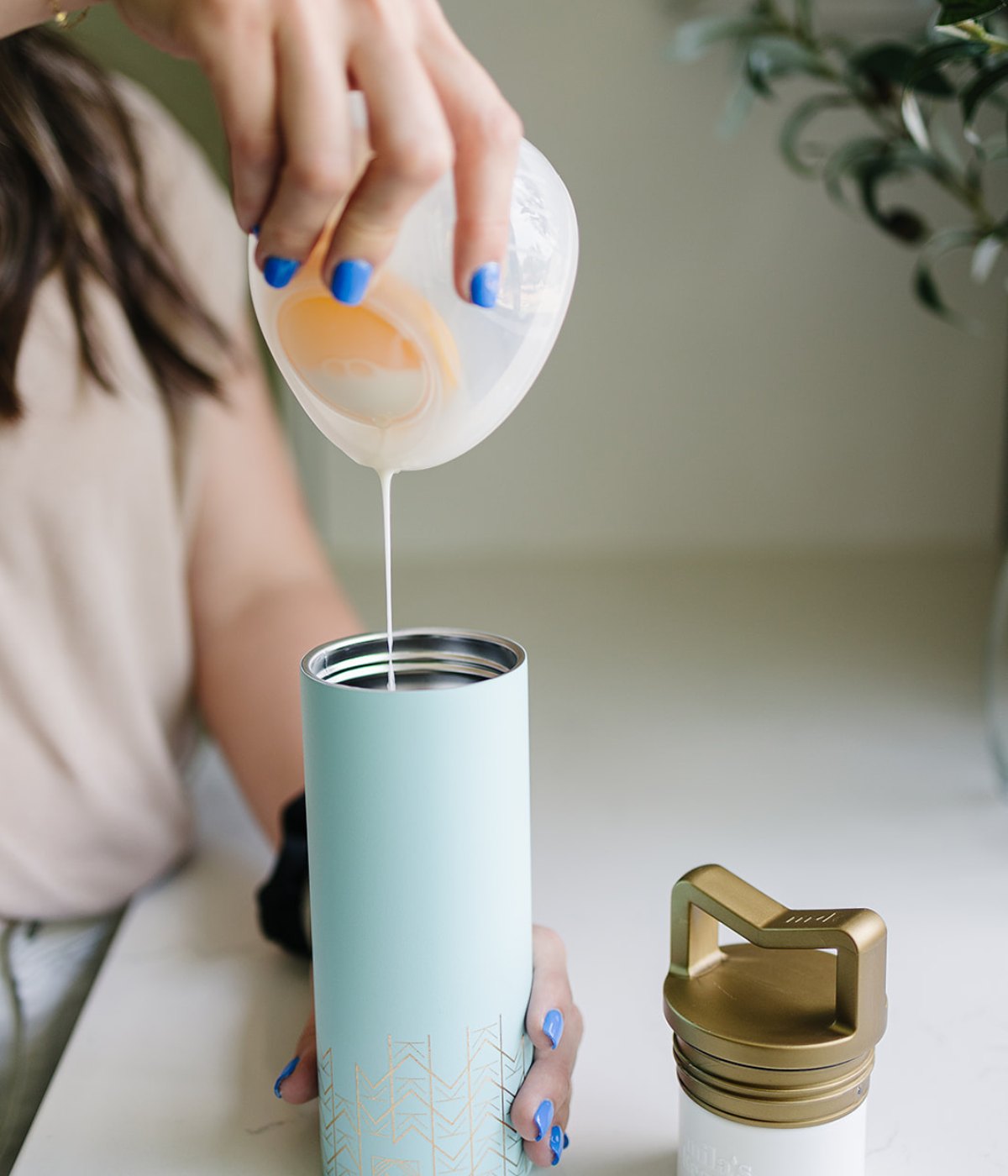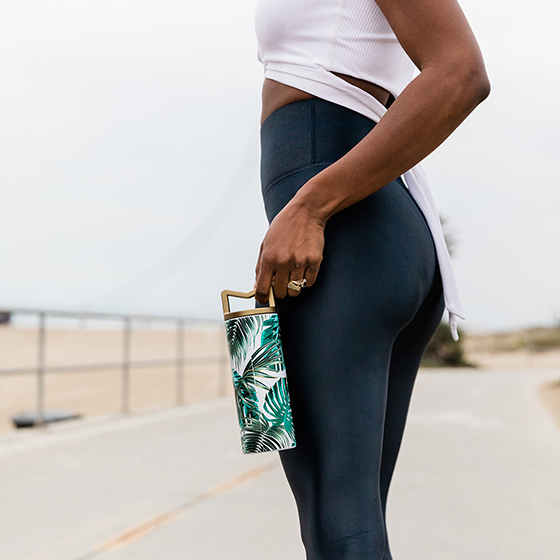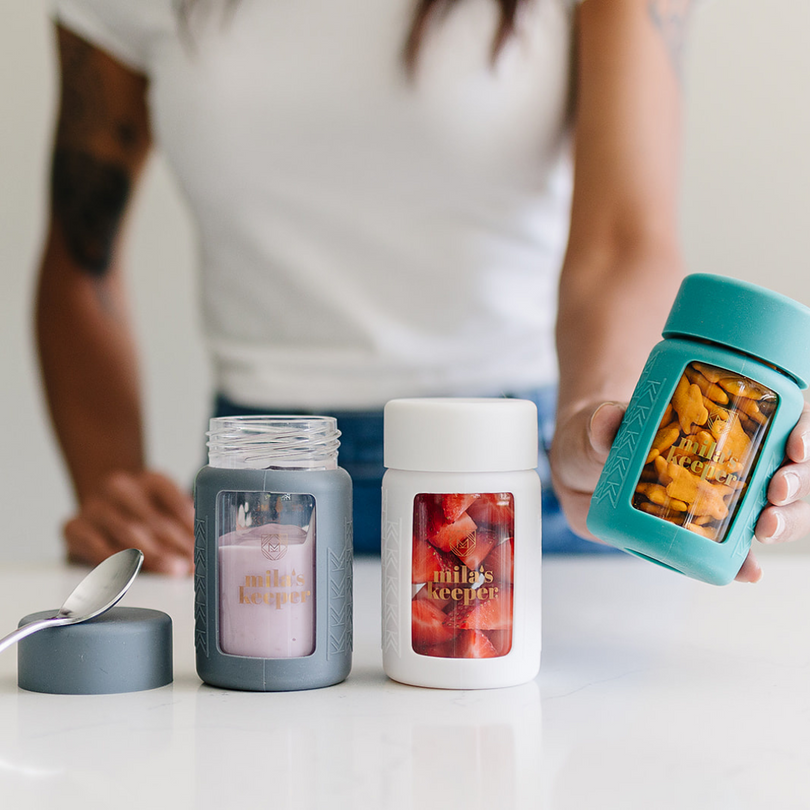If you’re pumping multiple times a day, you’ve probably wondered if there’s a way to make all that washing and sanitizing a little easier. Good news — there is! Keeping breast pump parts in the fridge between pumping sessions can be a safe and time-saving strategy many moms swear by.
Instead of scrubbing and sterilizing after every use (because who has time for that?), you can store pump parts in the fridge to keep them clean and ready for the next session. But like anything that involves your baby’s milk, there are some best practices to follow to make sure everything stays safe and hygienic.
In this guide, we’ll walk you through why storing breast pump parts in the fridge is a real time-saver, exactly how to do it safely, and what tools (like airtight containers and breast milk bottles) can make life easier.
Why Store Breast Pump Parts in the Fridge?
If you’re pumping several times a day — whether you’re exclusively pumping, back at work, or just building a freezer stash — the thought of washing every single piece between sessions can feel overwhelming. Storing breast pump parts in the fridge lets you skip some of that hassle, while still keeping everything clean and ready for use.
Here are a few reasons moms love this method:
-
It saves time. You can store breast pump parts in the fridge and only wash and sanitize them once a day (instead of after every pump).
-
It reduces stress. When you're juggling pumping with work, baby care, and everything else, the last thing you need is more dishes.
-
It’s safe when done right. If pump parts are stored properly in the refrigerator and used within a reasonable timeframe, this method is safe for most babies.
-
It helps working and traveling moms. If you’re pumping at work or on the go, keeping parts in a cooler or fridge lets you pump without worrying about constant washing. Breast milk coolers are a perfect solution for moms who need on-the-go breast milk storage — plus, they're stylish and practical!
How to Properly Store Breast Pump Parts in the Fridge
Now that you know why keeping pump parts in the fridge is such a time-saver, let’s get into the “how-to” part. Here’s a step-by-step guide to make sure everything stays safe and hygienic.
1. Rinse pump parts right after use.
Even though you’ll be putting them in the fridge, it’s important to rinse all the milk residue off the parts first. Use clean water (warm if possible) and give them a quick swish to remove any leftover milk.
2. Skip drying — but don’t skip rinsing.
Unlike washing for storage on a shelf, you don’t have to dry the parts before refrigerating them. In fact, putting them in the fridge slightly wet is okay as long as they’re rinsed clean.
3. Use an airtight container.
Place all parts in a clean, airtight container or zip-top bag to avoid exposure to bacteria and fridge odors.
4. Label if needed.
If you’re sharing a fridge at work or pumping in public spaces, consider labeling your container to avoid mix-ups.
5. Wash and sanitize daily.
Even if you’re keeping pump parts in the fridge, they should still be washed and sanitized at least once a day to keep everything safe.
Tip for on-the-go moms: If you don’t have access to a fridge, breast milk coolers can also keep pump parts cold until you get home. Just pop the parts in a clean container and place them in the cooler along with your milk.

Cleaning and Sanitizing Pump Parts Before Fridge Storage
Before you stash your pump parts in the fridge, it’s important to give them a quick clean. Even though refrigerating helps slow bacterial growth, any leftover milk can still harbor bacteria if not rinsed away properly.
Why Cleaning First Matters
While many moms use the fridge method to save time between pump sessions, it’s still important to rinse pump parts right after each use to prevent milk residue from sitting on the parts. Even though refrigerating slows bacterial growth, residual milk left on un-rinsed parts could still allow some bacteria to grow.
The Centers for Disease Control and Prevention (CDC) officially recommends washing pump parts thoroughly after every use to protect babies from harmful germs. However, many moms find that rinsing pump parts and storing them in the fridge between uses works for their daily routines — as long as parts are fully washed and sanitized at least once a day.
Tip: Using silicone breast milk bottles or glass bottles can also help ensure you’re working with safe, non-toxic materials when storing both milk and pump parts.
Note: One study found that nearly 90% of expressed breast milk samples delivered to NICU infants were contaminated with bacteria, often due to improper hand hygiene and pump part cleaning. This shows just how important it is to rinse and store pump parts properly to protect your baby’s milk.
If you’re looking for quick options while on-the-go, sanitizing breast pump wipes can be a helpful temporary solution — just don’t forget to do a thorough wash and sanitize when you’re home.
Recommended Cleaning Solutions
-
Warm, soapy water (daily full clean)
-
Fragrance-free sanitizing wipes (for quick in-between sessions)
-
Boiling water or steam sanitizers (once daily or as needed)
Most quality silicone breast milk bottles and glass breast milk bottles are dishwasher-safe and easy to sanitize — making them a great tool for both milk storage and pump part organization.
How Long Can You Store Breast Pump Parts in the Fridge?
If you’re using the fridge method to store pump parts between sessions, you might be wondering how long is safe before a full wash is needed. While refrigerating parts can slow the growth of bacteria, it doesn't stop it completely — so there are still limits on how long pump parts should sit without a proper cleaning.
What the Experts Say:
The Centers for Disease Control and Prevention (CDC) and most breast pump manufacturers recommend washing pump parts thoroughly after every use to protect babies from germs. But the CDC also recognizes that if you can't clean parts right away — like when you're at work — you can rinse and refrigerate pump parts for a few hours between uses to help slow bacterial growth.
Important note: The CDC makes it clear that refrigeration doesn’t completely prevent bacteria from growing, and no studies have confirmed whether storing rinsed parts in the fridge is as safe as washing them between each use. Some infants have gotten sick from bacteria that grew on pump parts that weren't cleaned properly.
You can find this full guidance directly from the CDC here.
How to Know It’s Time to Clean:
-
Milk residue or buildup on flanges, valves, or membranes.
-
Odors coming from stored parts (could indicate bacterial growth).
-
Moisture pooling in containers, creating a breeding ground for mold.
If in doubt, err on the side of caution and clean the parts.
Alternatives to Fridge Storage: When to Wash or Sterilize Instead
While keeping breast pump parts in the fridge is a huge time-saver, there are times when it’s better to fully wash or sterilize between uses.
When You Should Wash Instead of Refrigerating:
-
If your baby is premature or has health issues, parts should be cleaned and sterilized after each use to avoid risk of infection.
-
If you notice visible milk residue that didn’t rinse off easily.
-
If 24 hours have passed since your last pump — parts should not be stored in the fridge indefinitely without cleaning.
-
After pumping in a public or shared space, like a workplace with limited sanitation.
Deep Cleaning Options:
-
Dishwasher (top rack only) — Many breast pump parts are dishwasher-safe, which makes cleaning fast and thorough.
-
Boiling water — Submerge parts in boiling water for at least 5 minutes.
-
Steam sterilizers — Great for daily deep cleaning.
Quick Note: A 2022 report by the Centers for Disease Control and Prevention (CDC) highlighted a tragic case where an infant's death was linked to Cronobacter sakazakii infection traced to contaminated breast pump parts. The parts were cleaned in a household sink, sanitized, and sometimes assembled while still moist, underscoring the importance of thorough cleaning and proper drying of pump components to prevent bacterial contamination.

Best Containers for Storing Pump Parts in the Fridge
Choosing the right container to store breast pump parts in the fridge makes a big difference in keeping them clean and safe from contamination.
What to Look for in a Storage Container:
-
Airtight: Keeps out fridge odors and bacteria.
-
Food-safe materials: BPA-free plastic, glass, or silicone.
-
Easy to clean: Dishwasher-safe is ideal.
-
Sized appropriately: Big enough for all pump parts but compact to save fridge space.
Recommended Options:
-
Glass breast milk bottles — safe, reusable, and eco-friendly.
-
Silicone bottles — flexible and perfect for travel or tight fridge spaces.
-
Large silicone storage bags for space-saving.
Managing Multiple Pump Sessions: Keeping Parts Fresh Throughout the Day
If you’re pumping more than once a day (and let’s be honest — most moms are!), figuring out how to keep pump parts fresh between sessions is important. Here’s how to handle it without adding stress.
Tips for Staying Organized:
-
Rinse and refrigerate parts right after use — don’t leave them sitting out.
-
Use labeled containers for each session if you pump in different locations (e.g., home, work).
-
Rotate pump parts — if you pump often, having a second or third set of parts makes life easier.
If you’re out and about, use a breast milk cooler to keep both milk and pump parts cold until you get home.
Handling All-Day Pumping Needs:
-
Morning session? Rinse and store parts for the afternoon.
-
Evening session? Make sure all parts are washed by the end of the day.

Troubleshooting Common Issues with Pump Parts Storage
Even when you're doing everything right, storing breast pump parts in the fridge can sometimes lead to issues. Here’s how to handle the most common ones:
1. Odor from Stored Pump Parts
If you notice a bad smell when taking out pump parts, it could be from fridge odors or leftover milk residue.
Solution:
-
Always use airtight containers to block out smells.
-
Make sure parts are well-rinsed before storage.
-
Wash and sanitize parts daily — refrigeration is not a substitute for regular cleaning.
2. Moisture Buildup in Containers
Some condensation is normal, but excess moisture can create a breeding ground for bacteria.
Solution:
-
Give pump parts a quick shake after rinsing to remove excess water.
-
If moisture pools, replace the container or dry it out before storing parts again.
3. Mold or Visible Residue
If you ever see mold or film on parts, discard them and replace them with new parts.
Silicone bottles can be a more mold-resistant option compared to some plastic containers, especially when cleaned regularly.
Conclusion: Efficiently Managing Breast Pump Parts with Fridge Storage
If you’re a busy mom juggling pumping with everything else on your plate, storing breast pump parts in the fridge can be a helpful hack. It saves time, reduces stress, and — when done properly — keeps your pump parts safe and ready to use.
To recap:
-
Always rinse parts right after use.
-
Store them in airtight containers (like glass or silicone bottles).
-
Clean and sanitize everything at least once a day.
-
Watch for signs that parts need cleaning or replacing.
You’ve got this, mama!
--
A female-designed and female-run company, Mila's Keeper is on a mission to empower women to thrive during their breastfeeding journey by offering reusable, eco-friendly breast milk storage solutions for their day-to-day needs. Get the latest tips and info on Mila's Keeper products by following us on Facebook, Twitter, Instagram, Pinterest, and LinkedIn.













